- Home
- J. K. Rowling
The Hogwarts Library Collection Page 4
The Hogwarts Library Collection Read online
Page 4
HIDEBEHIND
M.O.M. CLASSIFICATION: XXXX
The Hidebehind is an accidentally created species, which was imported to North America by Old World crook Phineas Fletcher. Fletcher, a trader in banned artefacts and creatures, had intended to import a trafficked Demiguise into the New World, with the aim of manufacturing Invisibility Cloaks. The Demiguise escaped on board ship and bred with a stowaway ghoul. Their resultant offspring escaped into Massachusetts forests when Phineas’s ship docked, and their descendants continue to infest the region today. The Hidebehind is nocturnal and has the power of invisibility. Those who have seen it describe a tall, silver-haired creature, something like a skinny bear. Its preferred prey is humans, which Magizoologists speculate is the result of the cruelty with which Phineas Fletcher was known to treat the unfortunate creatures in his power.
HIPPOCAMPUS
M.O.M. CLASSIFICATION: XXX
Originating in Greece, the Hippocampus has the head and forequarters of a horse and the tail and hindquarters of a giant fish. Though the species is usually to be found in the Mediterranean, a superb blue roan specimen was caught by merpeople off the shores of Scotland in 1949 and subsequently domesticated by them. The Hippocampus lays large, semi-transparent eggs through which the Tadfoal may be seen.
HIPPOGRIFF
M.O.M. CLASSIFICATION: XXX
The Hippogriff is native to Europe, though now found worldwide. It has the head of a giant eagle and the body of a horse. It can be tamed, though this should be attempted only by experts. Eye contact should be maintained when approaching a Hippogriff. Bowing shows good intentions. If the Hippogriff returns the greeting, it is safe to draw closer.
The Hippogriff burrows for insects but will also eat birds and small mammals. Breeding Hippogriffs build nests upon the ground into which they will lay a single large and fragile egg, which hatches within twenty-four hours. The fledgling Hippogriff should be ready to fly within a week, though it will be a matter of months before it is able to accompany its parent on longer journeys.
HODAG
M.O.M. CLASSIFICATION: XXX
The Hodag is horned, with red, glowing eyes and long fangs, and the size of a large dog. The Hodag’s magic resides largely in its horns which, when powdered, make a man immune to the effects of alcohol and able to go without sleep for seven days and seven nights. Like the Snallygaster, the Hodag is a North American creature whose antics have excited considerable Muggle interest and curiosity. It feeds largely on Mooncalves and is consequently attracted to Muggle farms at night. MACUSA’s Department of No-Maj Misinformation has put in considerable work to successfully convince Muggles that sightings of Hodags have been hoaxes. It is now confined, mostly successfully, to a protected area around Wisconsin.
HORKLUMP
M.O.M. CLASSIFICATION: X
The Horklump comes from Scandinavia but is now widespread throughout northern Europe. It resembles a fleshy, pinkish mushroom covered in sparse, wiry black bristles. A prodigious breeder, the Horklump will cover an average garden in a matter of days. It spreads sinewy tentacles rather than roots into the ground to search for its preferred food of earthworms. The Horklump is a favourite delicacy of gnomes but otherwise has no discernible use.
HORNED SERPENT
M.O.M. CLASSIFICATION: XXXXX
Several species of Horned Serpents exist globally: large specimens have been caught in the Far East, while ancient bestiaries suggest that they were once native to Western Europe, where they have been hunted to extinction by wizards in search of potion ingredients. The largest and most diverse group of Horned Serpents still in existence is to be found in North America, of which the most famous and highly prized has a jewel in its forehead, which is reputed to give the power of invisibility and flight. A legend exists concerning the founder of Ilvermorny School of Witchcraft and Wizardry, Isolt Sayre, and a Horned Serpent. Sayre was reputed to be able to understand the serpent, which offered her shavings from its horn as the core of the first ever American-made wand. The Horned Serpent gives its name to one of the houses of Ilvermorny.
IMP
M.O.M. CLASSIFICATION: XX
The imp is found only in Britain and Ireland. It is sometimes confused with the pixie. They are of similar height (between six and eight inches), though the imp cannot fly as the pixie can, nor is it as vividly coloured (the imp is usually dark brown to black). It does, however, have a similar slapstick sense of humour. Its preferred terrain is damp and marshy, and it is often found near riverbanks, where it will amuse itself by pushing and tripping the unwary. Imps eat small insects and have breeding habits much like the fairies, though imps do not spin cocoons; the young are hatched fully formed at around one inch in length.
JARVEY
M.O.M. CLASSIFICATION: XXX
The Jarvey is found in Britain, Ireland and North America. It resembles an overgrown ferret in most respects, except for the fact that it can talk. True conversation, however, is beyond the wit of the Jarvey, which tends to confine itself to short (and often rude) phrases in an almost constant stream. Jarveys live mostly below ground, where they pursue gnomes, though they will also eat moles, rats and voles.
JOBBERKNOLL
M.O.M. CLASSIFICATION: XX
The Jobberknoll (northern Europe and America) is a tiny blue, speckled bird which eats small insects. It makes no sound until the moment of its death, at which point it lets out a long scream made up of every sound it has ever heard, regurgitated backwards. Jobberknoll feathers are used in Truth Serums and Memory Potions.
KAPPA
M.O.M. CLASSIFICATION: XXXX
The Kappa is a Japanese water demon that inhabits shallow ponds and rivers. Often said to look like a monkey with fish scales instead of fur, it has a hollow in the top of its head in which it carries water.
The Kappa feeds on human blood but may be persuaded not to harm a person if it is thrown a cucumber with that person’s name carved into it. In confrontation, a wizard should trick the Kappa into bowing – if it does so, the water in the hollow of its head will run out, depriving it of all its strength.
KELPIE
M.O.M. CLASSIFICATION: XXXX
This British and Irish water demon can take various shapes, though it most often appears as a horse with bulrushes for a mane. Having lured the unwary on to its back, it will dive straight to the bottom of its river or lake and devour the rider, letting the entrails float to the surface. The correct means to overcome a kelpie is to get a bridle over its head with a Placement Charm, which renders it docile and unthreatening.
The world’s largest kelpie is found in Loch Ness, Scotland. Its favourite form is that of a sea serpent. International Confederation of Wizard observers realised that they were not dealing with a true serpent when they saw it turn into an otter on the approach of a team of Muggle investigators and then transform back into a serpent when the coast was clear.
KNARL
M.O.M. CLASSIFICATION: XXX
The Knarl (northern Europe and America) is usually mistaken for a hedgehog by Muggles. The two species are indeed indistinguishable except for one important behavioural difference: if food is left out in the garden for a hedgehog, it will accept and enjoy the gift; if food is offered to a Knarl, on the other hand, it will assume that the householder is attempting to lure it into a trap and will savage that householder’s garden plants or garden ornaments. Many a Muggle child has been accused of vandalism when an offended Knarl was the real culprit.
KNEAZLE
M.O.M. CLASSIFICATION: XXX
The Kneazle was originally bred in Britain, though it is now exported worldwide. A small cat-like creature with flecked, speckled or spotted fur, outsize ears and a tail like a lion’s, the Kneazle is intelligent, independent and occasionally aggressive, though if it takes a liking to a witch or wizard, it makes an excellent pet. The Kneazle has an uncanny ability to detect unsavoury or suspicious characters and can be relied upon to guide its owner safely home if they are lost. Kneazles have up to e
ight kittens in a litter and can interbreed with cats. Licences are required for ownership as (like Crups and Fwoopers) Kneazles are sufficiently unusual in appearance to attract Muggle interest.
LEPRECHAUN
(sometimes known as Clauricorn)
M.O.M. CLASSIFICATION: XXX
More intelligent than the fairy and less malicious than the imp, the pixie or the Doxy, the leprechaun is nevertheless mischievous. Found only in Ireland, it achieves a height of up to six inches and is green in colour. It has been known to create crude clothing from leaves. Alone of the ‘little people’, leprechauns can speak, though they have never requested reclassification as ‘beings’. The leprechaun bears live young and lives mostly in forest and woodland areas, though it enjoys attracting Muggle attention and as a consequence features almost as heavily as the fairy in Muggle literature for children. Leprechauns produce a realistic gold-like substance that vanishes after a few hours, to their great amusement. Leprechauns eat leaves and, despite their reputation as pranksters, are not known ever to have done lasting damage to a human.
LETHIFOLD
(also known as Living Shroud)
M.O.M. CLASSIFICATION: XXXXX
The Lethifold is a mercifully rare creature found solely in tropical climates. It resembles a black cloak perhaps half an inch thick (thicker if it has recently killed and digested a victim) which glides along the ground at night. The earliest account we have of a Lethifold was written by the wizard Flavius Belby, who was fortunate enough to survive a Lethifold attack in 1782 while holidaying in Papua New Guinea.
Near one o’clock in the morning, as I began at last to feel drowsy, I heard a soft rustling close by. Believing it to be nothing more than the leaves of the tree outside, I turned over in bed, with my back to the window, and caught sight of what appeared to be a shapeless black shadow sliding underneath my bedroom door. I lay motionless, trying sleepily to divine what was causing such a shadow in a room lit only by moonlight. Undoubtedly my stillness led the Lethifold to believe that its potential victim was sleeping.
To my horror, the shadow began to creep up the bed, and I felt its slight weight upon me. It resembled nothing so much as a rippling black cape, the edges fluttering slightly as it slithered up the bed towards me. Paralysed with fear, I felt its clammy touch upon my chin before I sat bolt upright.
The thing attempted to smother me, sliding inexorably up my face, over my mouth and nostrils, but still I struggled, feeling it wrapping its coldness about me all the while. Unable to cry for assistance, I groped for my wand. Now dizzy as the thing sealed itself about my face, incapable of drawing breath, I concentrated with all my might upon the Stupefying Charm and then – as that failed to subdue the creature, though blasting a hole in my bedroom door – upon the Impediment Hex, which likewise availed me naught. Still struggling madly, I rolled sideways and fell heavily to the floor, now entirely wrapped in the Lethifold.
I knew that I was about to lose consciousness completely as I suffocated. Desperately, I mustered up my last reserve of energy. Pointing my wand away from myself into the deadly folds of the creature, summoning the memory of the day I had been voted President of the local Gobstones Club, I performed the Patronus Charm.
Almost at once I felt fresh air upon my face. I looked up to see that deathly shadow being thrown into the air upon the horns of my Patronus. It flew across the room and slithered swiftly out of sight.
As Belby so dramatically reveals, the Patronus is the only spell known to repel the Lethifold. Since it generally attacks the sleeping, though, its victims rarely have a chance to use any magic against it. Once its prey has been successfully suffocated, the Lethifold digests its food there and then in their bed. It then exits the house slightly thicker and fatter than before, leaving no trace of itself or its victim behind.19
LOBALUG
M.O.M. CLASSIFICATION: XXX
The Lobalug is found at the bottom of the North Sea. It is a simple creature, ten inches long, comprising a rubbery spout and a venom sac. When threatened, the Lobalug contracts its venom sac, blasting the attacker with poison. Merpeople use the Lobalug as a weapon and wizards have been known to extract its poison for use in potions, though this practice is strictly controlled.
* * *
19. The number of Lethifold victims is almost impossible to calculate since it leaves no clues to its presence behind it. Easier to calculate is the number of wizards who have, for their own unscrupulous purposes, pretended to have been killed by Lethifolds. The most recent instance of such duplicity occurred in 1973 when the wizard Janus Thickey vanished, leaving only a hastily written note on the bedside table reading ‘oh no a Lethifold’s got me I’m suffocating’. Convinced by the spotless and empty bed that such a creature had indeed killed Janus, his wife and children entered a period of strict mourning, which was rudely interrupted when Janus was discovered living five miles away with the landlady of the Green Dragon.
MACKLED MALACLAW
M.O.M. CLASSIFICATION: XXX
The Malaclaw is a land-dwelling creature found mostly on rocky coastlines around Europe. Despite its passing resemblance to the lobster, it should on no account be eaten, as its flesh is unfit for human consumption and will result in a high fever and an unsightly greenish rash.
The Malaclaw can reach a length of twelve inches and is light grey with deep-green spots. It eats small crustaceans and will attempt to tackle larger prey. The Malaclaw’s bite has the unusual side effect of making the victim highly unlucky for a period of up to a week after the injury. If you are bitten by a Malaclaw, all bets, wagers and speculative ventures should be cancelled, as they are sure to go against the victim.
MANTICORE
M.O.M. CLASSIFICATION: XXXXX
The Manticore is a highly dangerous Greek beast with the head of a man, the body of a lion and the tail of a scorpion. As dangerous as the Chimaera, and as rare, the Manticore is reputed to croon softly as it devours its prey. Manticore skin repels almost all known charms and the sting causes instant death.
MERPEOPLE
(also known as sirens, selkies, merrows)
M.O.M. CLASSIFICATION: XXXX20
Merpeople exist throughout the world, though they vary in appearance almost as much as humans. Their habits and customs remain as mysterious as those of the centaur, though those wizards who have mastered the language of Mermish speak of highly organised communities varying in size according to habitat, and some have elaborately constructed dwellings. Like the centaurs, the merpeople have declined ‘being’ status in favour of a ‘beast’ classification (see Introduction).
The oldest recorded merpeople were known as sirens (Greece) and it is in warmer waters that we find the beautiful mermaids so frequently depicted in Muggle literature and painting. The selkies of Scotland and the merrows of Ireland are less beautiful, but they share that love of music which is common to all merpeople.
MOKE
M.O.M. CLASSIFICATION: XXX
The Moke is a silver-green lizard reaching up to ten inches in length and is found throughout Britain and Ireland. It has the ability to shrink at will and has consequently never been noticed by Muggles.
Moke skin is highly prized among wizards for use as moneybags and purses, as the scaly material will contract at the approach of a stranger, just as its owner did; Moke-skin moneybags are therefore very difficult for thieves to locate.
MOONCALF
M.O.M. CLASSIFICATION: XX
The Mooncalf is an intensely shy creature that emerges from its burrow only at the full moon. Its body is smooth and pale grey, it has bulging round eyes on top of its head and four spindly legs with enormous flat feet. Mooncalves perform complicated dances on their hind legs in isolated areas in the moonlight. These are believed to be a prelude to mating (and often leave intricate geometric patterns behind in wheat fields, to the great puzzlement of Muggles).
Watching Mooncalves dance by moonlight is a fascinating experience and often profitable, for if their silvery dung is co
llected before the sun rises and spread upon magical herb and flower beds, the plants will grow very fast and become extremely strong. Mooncalves are found worldwide.
MURTLAP
M.O.M. CLASSIFICATION: XXX
The Murtlap is a rat-like creature found in coastal areas of Britain. It has a growth upon its back resembling a sea anemone. When pickled and eaten, these Murtlap growths promote resistance to curses and jinxes, though an overdose may cause unsightly purple ear hair. Murtlaps eat crustaceans and the feet of anyone foolish enough to step on them.
* * *
20. See classification footnote for centaur.
NIFFLER
M.O.M. CLASSIFICATION: XXX
The Niffler is a British beast. Fluffy, black and long-snouted, this burrowing creature has a predilection for anything glittery. Nifflers are often kept by goblins to burrow deep into the earth for treasure. Though the Niffler is gentle and even affectionate, it can be destructive to belongings and should never be kept in a house. Nifflers live in lairs up to twenty feet below the surface and produce six to eight young in a litter.
NOGTAIL
M.O.M. CLASSIFICATION: XXX
Nogtails are demons found in rural areas right across Europe, Russia and America. They resemble stunted piglets with long legs, thick, stubby tails and narrow black eyes. The Nogtail will creep into a sty and suckle an ordinary sow alongside her own young. The longer the Nogtail is left undetected and the bigger it grows, the longer the blight on the farm into which it has entered.
The Nogtail is exceptionally fast and difficult to catch, though if chased beyond the boundaries of a farm by a pure white dog, it will never return. The Department for the Regulation and Control of Magical Creatures (Pest Sub-Division) keeps a dozen albino bloodhounds for this purpose.

 Harry Potter and the Philosophers Stone
Harry Potter and the Philosophers Stone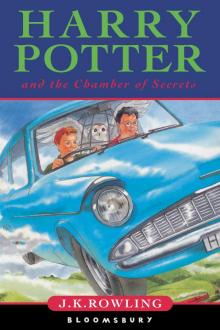 Harry Potter and the Chamber of Secrets
Harry Potter and the Chamber of Secrets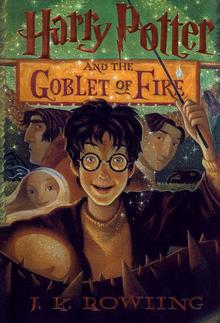 Harry Potter and the Goblet of Fire
Harry Potter and the Goblet of Fire Harry Potter and the Deathly Hallows
Harry Potter and the Deathly Hallows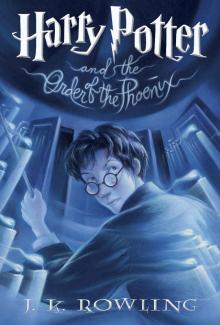 Harry Potter and the Order of the Phoenix
Harry Potter and the Order of the Phoenix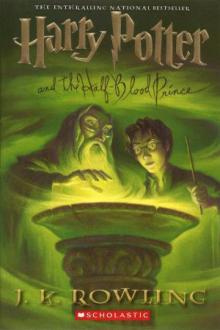 Harry Potter and the Half-Blood Prince
Harry Potter and the Half-Blood Prince Harry Potter and the Prisoner of Azkaban
Harry Potter and the Prisoner of Azkaban Fantastic Beasts and Where to Find Them
Fantastic Beasts and Where to Find Them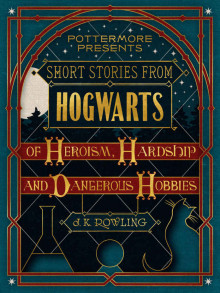 Short Stories from Hogwarts of Heroism, Hardship and Dangerous Hobbies
Short Stories from Hogwarts of Heroism, Hardship and Dangerous Hobbies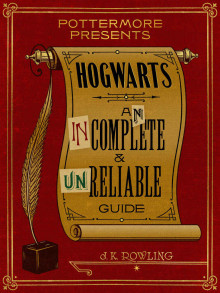 Hogwarts: An Incomplete and Unreliable Guide
Hogwarts: An Incomplete and Unreliable Guide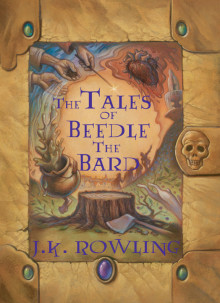 The Tales of Beedle the Bard
The Tales of Beedle the Bard The Casual Vacancy
The Casual Vacancy Harry Potter and the Cursed Child
Harry Potter and the Cursed Child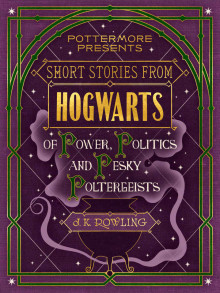 Short Stories from Hogwarts of Power, Politics and Pesky Poltergeists
Short Stories from Hogwarts of Power, Politics and Pesky Poltergeists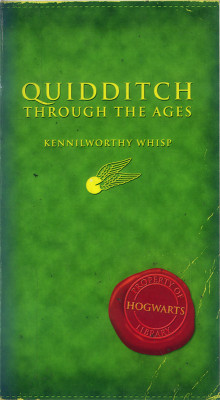 Quidditch Through the Ages
Quidditch Through the Ages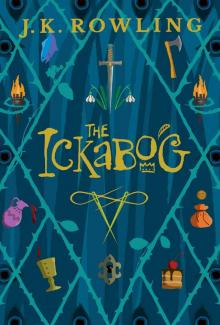 The Ickabog
The Ickabog![Fantastic Beasts, The Crimes of Grindelwald [UK] Read online](http://i1.bookreadfree.com/i/03/19/fantastic_beasts_the_crimes_of_grindelwald_uk_preview.jpg) Fantastic Beasts, The Crimes of Grindelwald [UK]
Fantastic Beasts, The Crimes of Grindelwald [UK]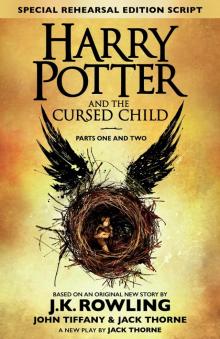 Harry Potter and the Cursed Child: Parts One and Two
Harry Potter and the Cursed Child: Parts One and Two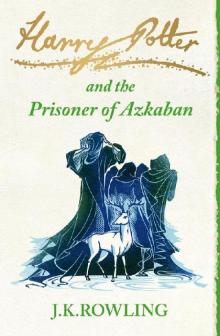 The Prisoner of Azkaban
The Prisoner of Azkaban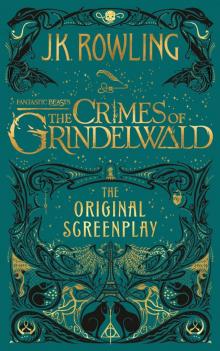 Fantastic Beasts: The Crimes of Grindelwald
Fantastic Beasts: The Crimes of Grindelwald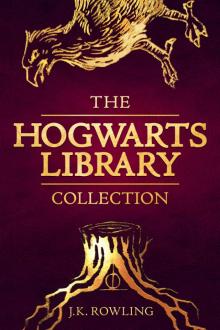 The Hogwarts Library Collection
The Hogwarts Library Collection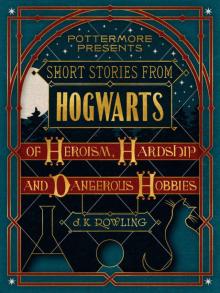 Short Stories from Hogwarts of Heroism, Hardship and Dangerous Hobbies (Kindle Single) (Pottermore Presents)
Short Stories from Hogwarts of Heroism, Hardship and Dangerous Hobbies (Kindle Single) (Pottermore Presents)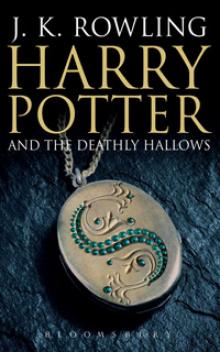 Harry Potter and the Deathly Hallows hp-7
Harry Potter and the Deathly Hallows hp-7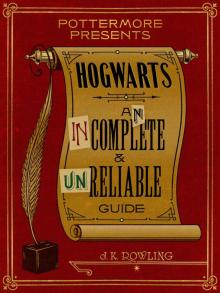 Hogwarts: An Incomplete and Unreliable Guide (Kindle Single) (Pottermore Presents)
Hogwarts: An Incomplete and Unreliable Guide (Kindle Single) (Pottermore Presents)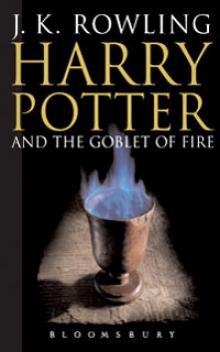 Harry Potter and the Goblet of Fire hp-4
Harry Potter and the Goblet of Fire hp-4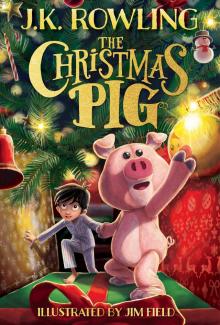 The Christmas Pig
The Christmas Pig Harry Potter and the Sorcerer's Stone
Harry Potter and the Sorcerer's Stone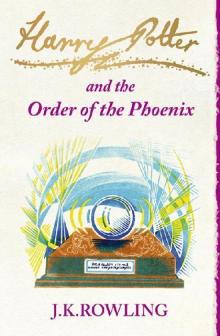 The Order of the Phoenix
The Order of the Phoenix Harry Potter and the Prisoner of Azkaban hp-3
Harry Potter and the Prisoner of Azkaban hp-3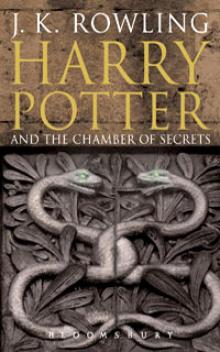 Harry Potter and the Chamber of Secrets hp-2
Harry Potter and the Chamber of Secrets hp-2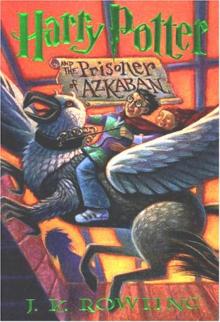 HP 3 - Harry Potter and the Prisoner of Azkaban
HP 3 - Harry Potter and the Prisoner of Azkaban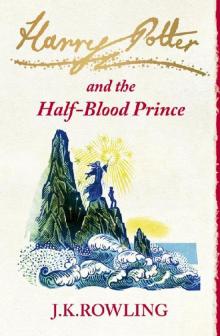 The Half-Blood Prince
The Half-Blood Prince The Hogwarts Collection
The Hogwarts Collection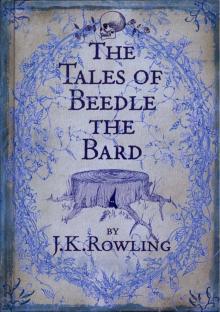 Tales of Beedle the Bard
Tales of Beedle the Bard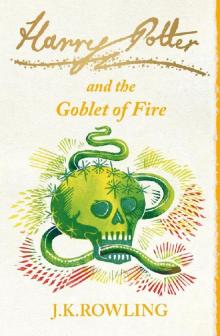 The Goblet of Fire
The Goblet of Fire Harry Potter and the Half-Blood Prince hp-6
Harry Potter and the Half-Blood Prince hp-6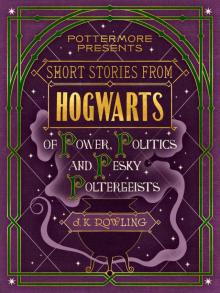 Short Stories from Hogwarts of Power, Politics and Pesky Poltergeists (Kindle Single) (Pottermore Presents)
Short Stories from Hogwarts of Power, Politics and Pesky Poltergeists (Kindle Single) (Pottermore Presents)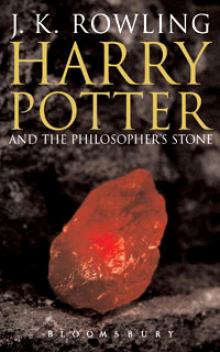 Harry Potter and the Sorcerer's Stone hp-1
Harry Potter and the Sorcerer's Stone hp-1